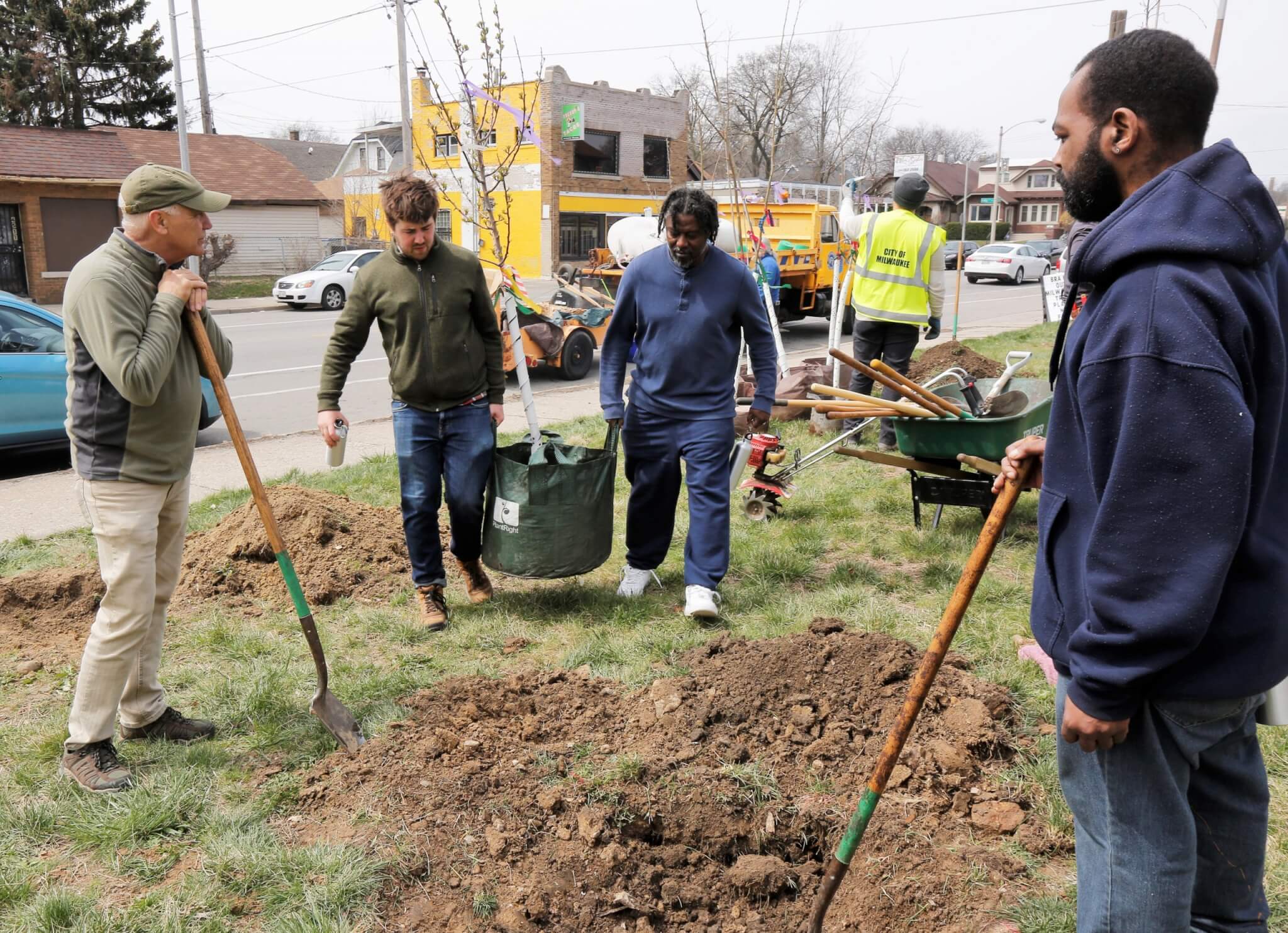The city of Milwaukee centers its connections to water on their city website proclaiming, “with three rivers and a Great Lake, water plays a key role in the city’s history, identity, and economy.” Today, the city’s primary water concerns center on safe drinking water and urban flooding, environmental hazards that disproportionately impact lower income Black and Brown communities in Milwaukee.
Milwaukee’s history includes redlining, the effects of which still contribute to disparities in access to employment opportunities, educational attainment, income and poverty, health outcomes, and incarceration by race. Lines of segregation in Milwaukee also limit access to green spaces, waterways, and a healthy environment.
Lead service lines (LSLs), once totalling around 70,000 throughout the city’s water system, are down today to around 65,000 since the city’s lead service line replacement program started in 2017. This number still leaves a large portion of the population exposed to the dangers of lead infrastructure, and contributes to a higher frequency of lead poisoning cases in lower income neighborhoods on Milwaukee’s north and south sides.
Mayor Cavalier Johnson and Senator Tammy Baldwin join Milwaukee Water Works at the site of a lead service line replacement in Milwaukee to announce the launch of the City’s Lead Service Line Equity Prioritization Plan with an infusion of federal funding through the SRF program. Photo courtesy MWC.
The City’s position on Lake Michigan and the confluence of three rivers also makes some neighborhoods in historic wetlands particularly prone to flooding and basement backups during major storms. The Kinnickinnic River watershed, located in the predominantly Latinx neighborhoods on Milwaukee’s southside, is almost 97% impervious surfaces, which Fitzgerald explains makes it “dangerous for folks to be near their local waterway. It’s like a Class 5 rapid on the river during a major rainstorm.”
Another perhaps less obvious factor is Milwaukee’s under-maintained tree canopy and inequitable coverage of tree canopy. Fitzgerald described how, “[Milwaukee] lost a lot of trees to Dutch Elm disease and are also losing trees to the Emerald Ash Borer. When there’s a big storm that comes through Milwaukee… due to a lack of funding for maintenance of the trees that do exist, we also have a lot of issues of folks with branches falling on their houses, falling on their cars, trees falling on the street.” Tree cover in a city absorbs significant amounts of stormwater, and without this, flooding issues in Milwaukee are exacerbated. (The City of Milwaukee received an Urban and Community Forestry grant from USDA and USFS to address these interconnected challenges; River Network is honored to be a National Pass-Through Partner in the program as well.)

Residents in Milwaukee’s Sherman Park Neighborhood work with Milwaukee Water Commons and its partners to restore neighborhood tree canopy found in open public spaces. (Photo Credit – Pat Robinson.)
MWC’s water infrastructure efforts stem directly from these water concerns and their community’s desires to address them. “Our organization’s start in getting involved around water infrastructure came from a call from the community: that they want safe water to drink; that they want clean water to visit in our lakes and rivers; and that they want a safe relationship with water as well,” said Fitzgerald.
These present day desires are driven by a complex and unique history.
The city also saw white flight and suburban sprawl, beginning with racially restrictive covenants as early as 1919, and other policies continuing into the mid-20th century. As a result, and, “because we’re an older, major city… our infrastructure system is generally older than some of the other communities around us in the suburbs and exurbs, and our population is smaller than the infrastructure system was initially built for.”
The bottom line? So much wealth has left the city that Milwaukee’s current residents disproportionately experience poverty and the city has an oversized water system without the rate payer base to address its water infrastructure concerns.
This is where MWC’s SRF advocacy comes in. They recognized this opportunity as a chance to change this long-standing spatial racism and advance their three areas of justice: procedural justice, distributive justice, and restorative justice.


